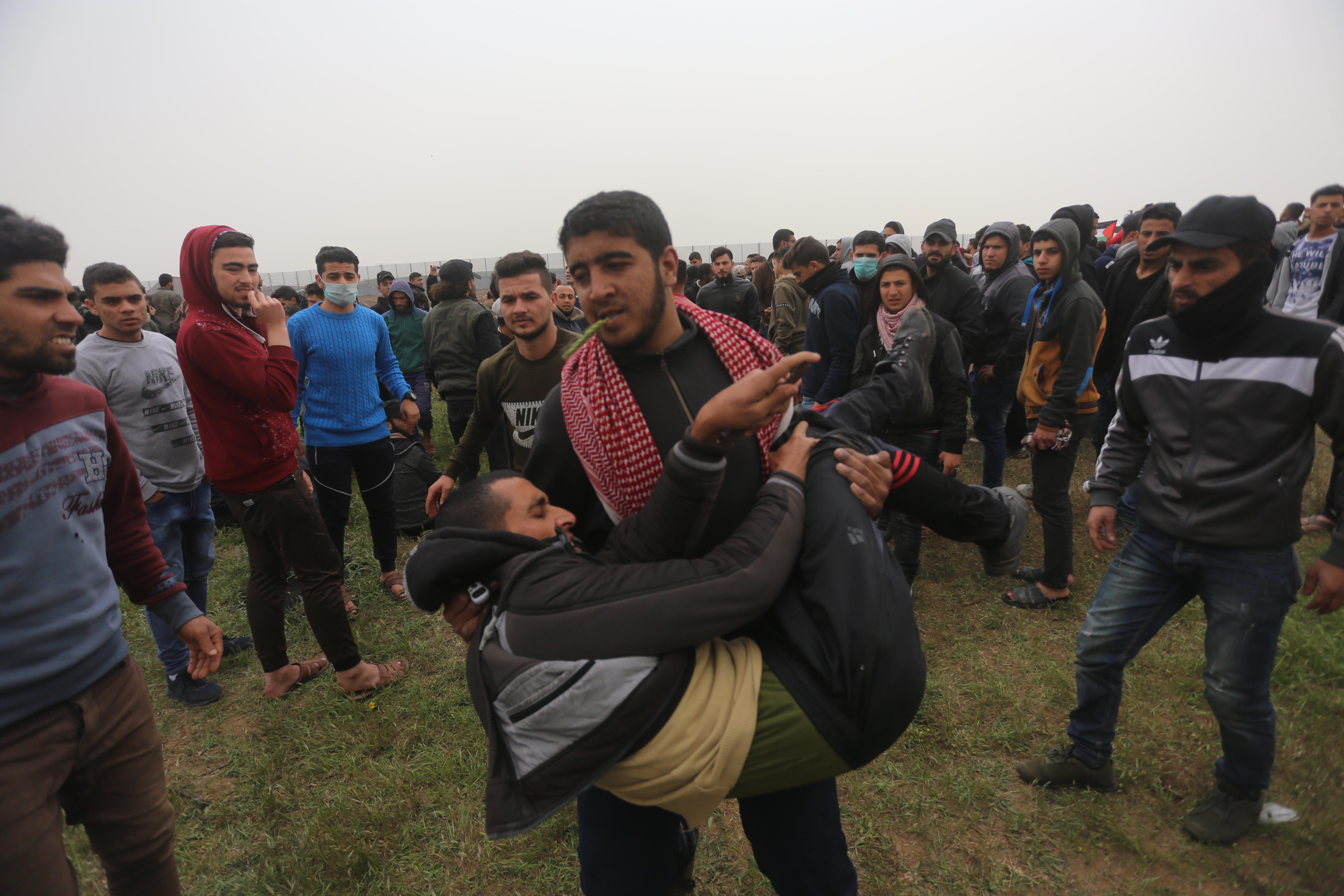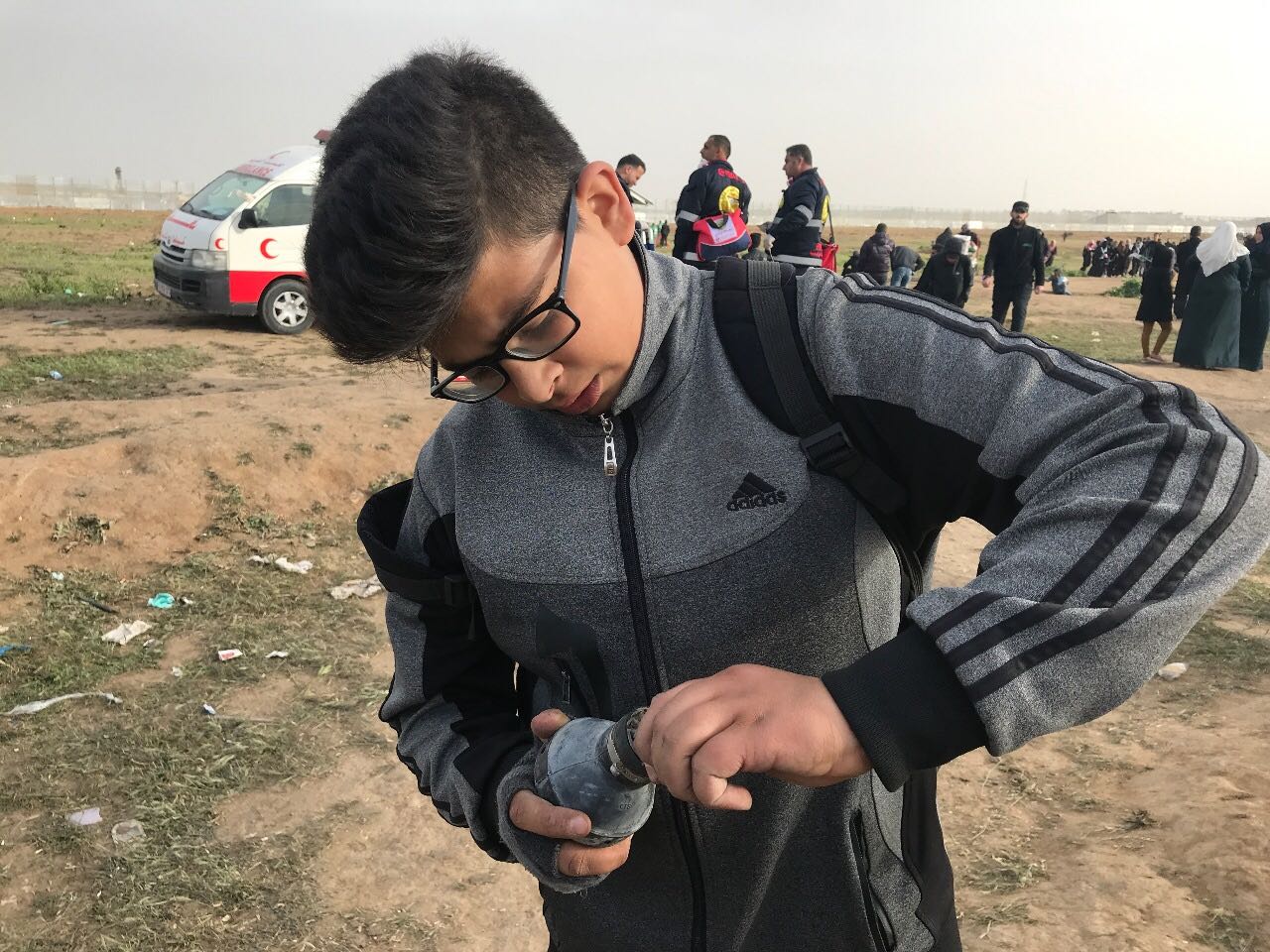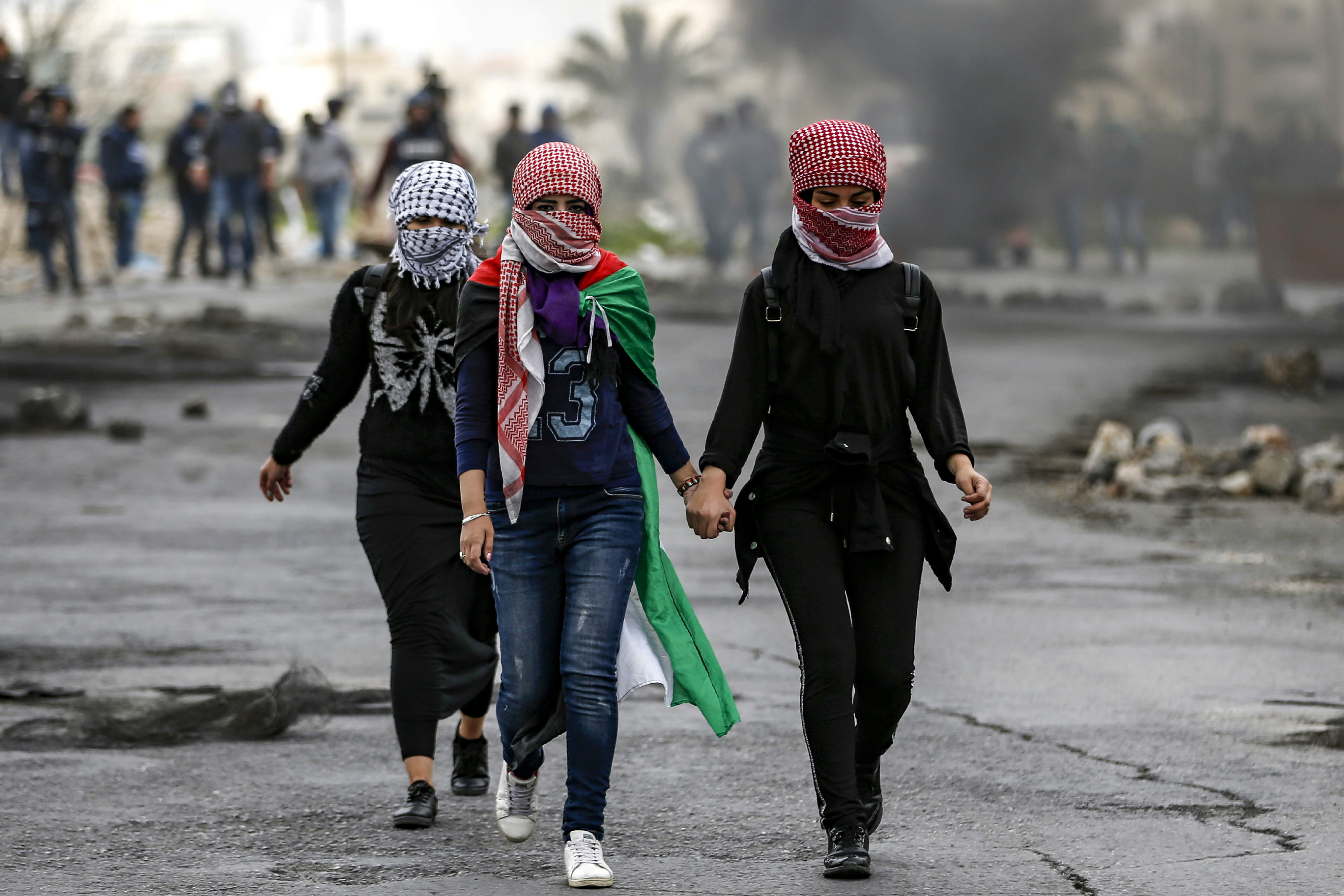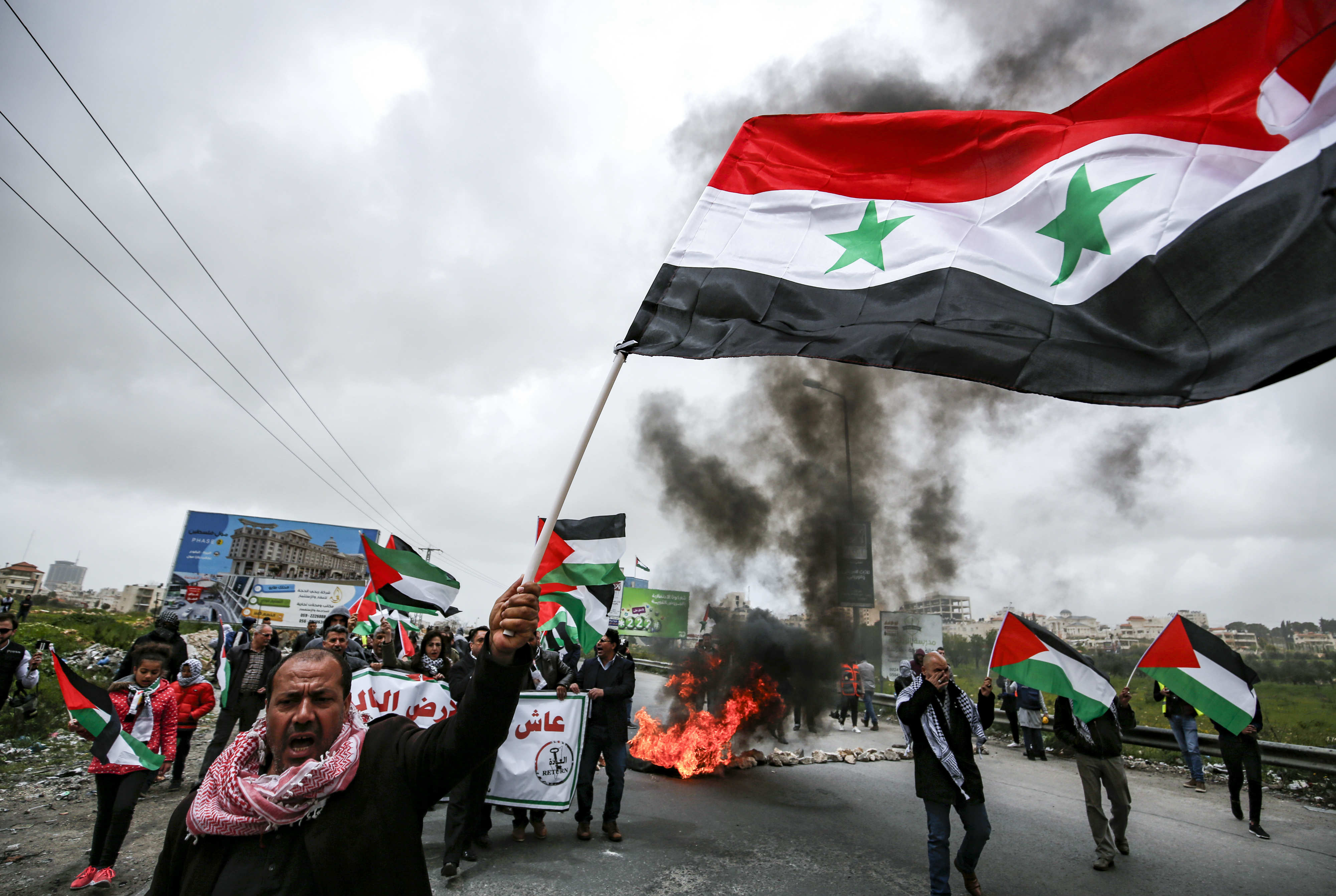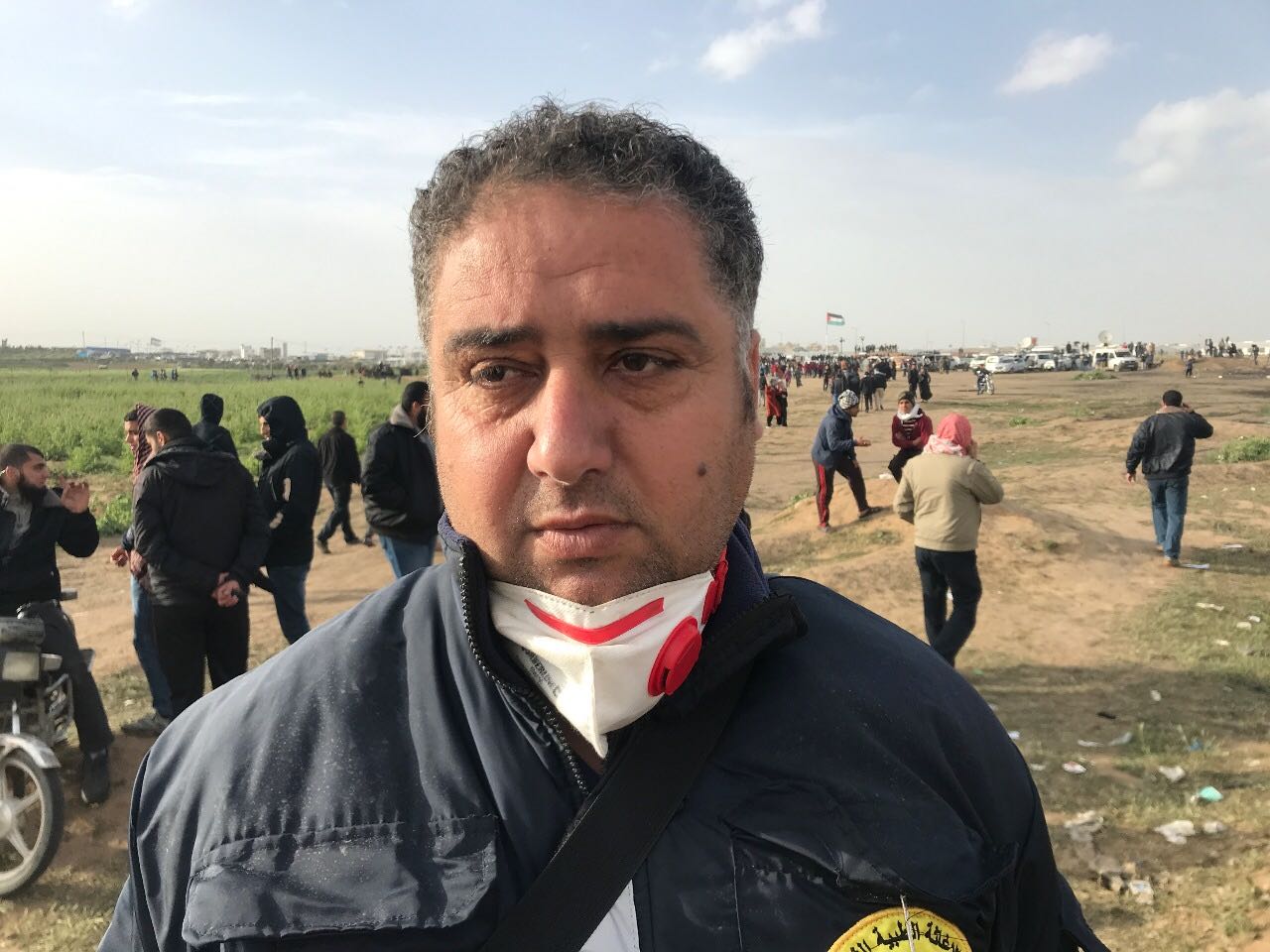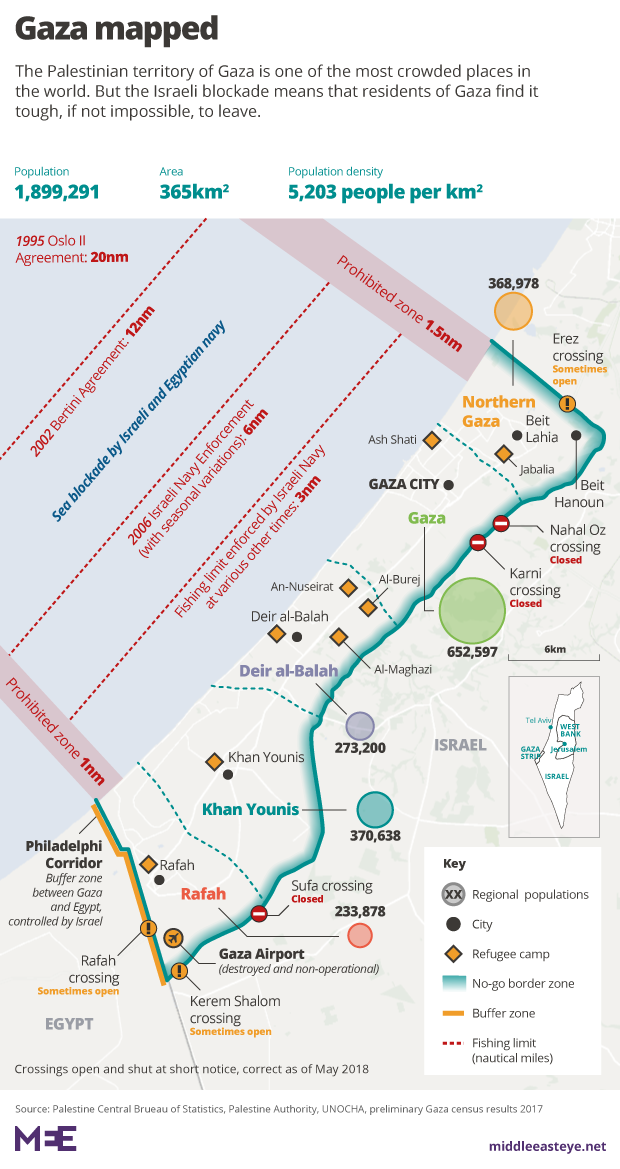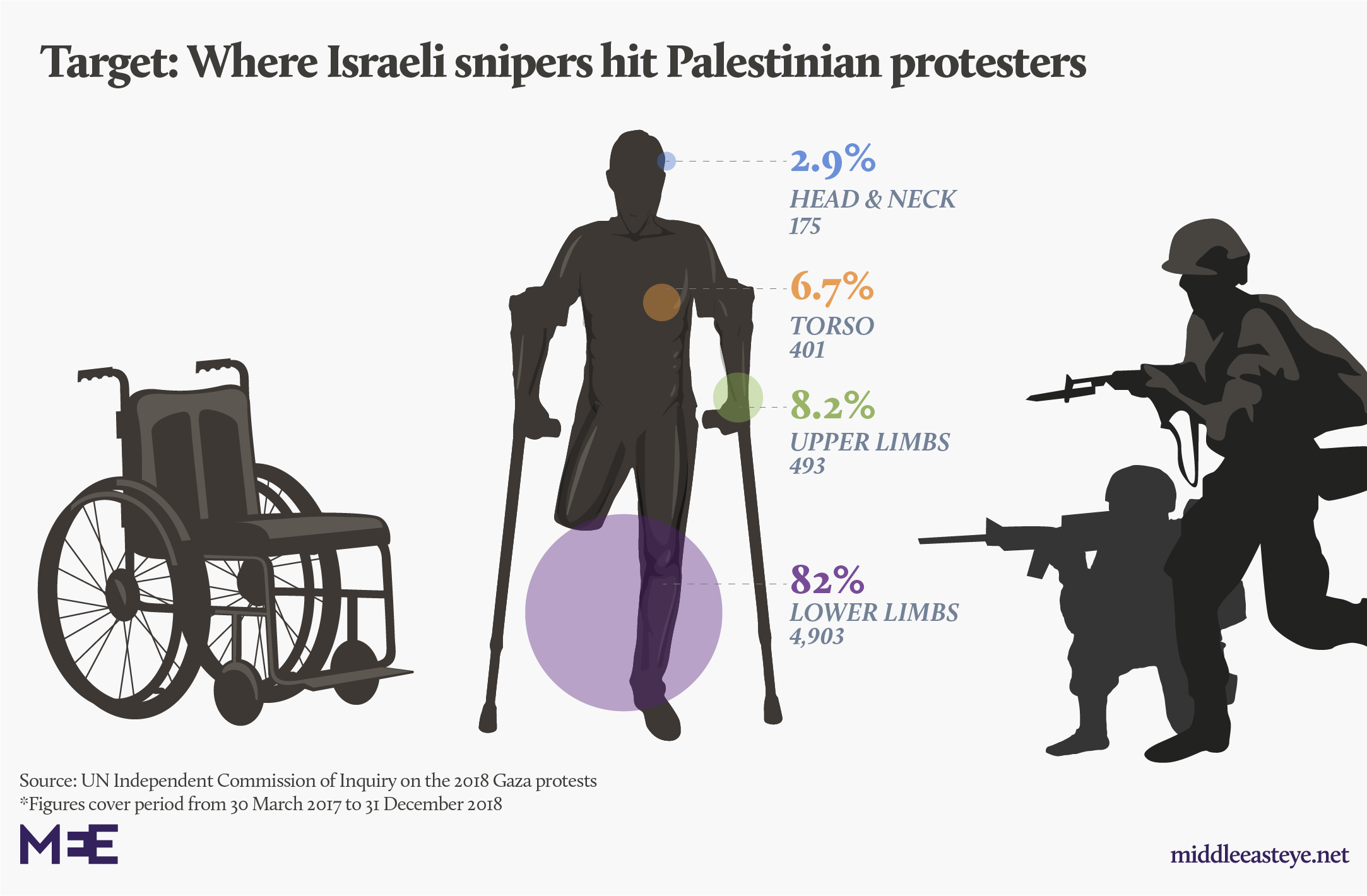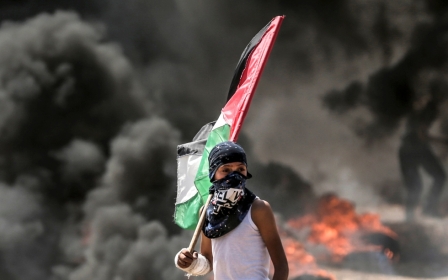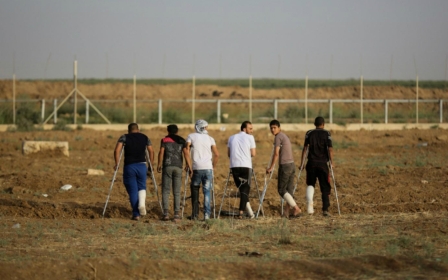Live: Gaza marks year of protests

Live Updates
Today marks 365 days since the Great March of Return demonstrations began along the Gaza-Israel border.
Since then, nearly 200 Palestinians have been killed and 29,000 wounded by Israeli forces.
Watch Middle East Eye's video here:
Gaza Ministry of Health says 17-year-old Bilal Mahmoud al-Najjar was shot east of Khan Younis.
Hundreds of Palestinian citizens of Israel have now congregated in Sakhnin and are listening to politicians give speeches.
“In Sakhnin, in Gaza and the West Bank, the Palestinian people have announced their attachment to its land, to its nation and its shared fate,” Jamal Zahalka, a Palestinian member of the Israeli parliament and head of the Balad party, told MEE in Sakhnin.
The position of Palestinian citizens of Israel has again been under scrutiny ahead of 9 April’s parliamentary elections. Prime Minister Benjamin Netanyahu has been accused of victimising the community to drum up support.
“Today martyrs fell in Gaza on Land Day. From here, we send our greetings to our people in Gaza,” Mohammed Baraka, head of the Arab Follow-Up Committee, which represents Palestinian citizens of Israel, told the crowd in Sakhnin.
He railed against US President Donald Trump’s decision to recognise Israel’s control over the occupied Golan Heights, captured from Syria in the 1967 Middle East war.
“It may take time but states of tyranny will fall and states of freedom will rise. Trump’s declaration granting the Golan to Israel, this declaration will fall because there is no right over our right.”
A third Palestinian protester has been killed, according to Gaza's health ministry.
Tamer Abu al-Kheir, 17, was the shot in the chest east of Khan Younes, the ministry said.
Using Save the Children's statistics cited earlier, that means 51 Palestinian children have been killed by Israeli forces since the Great March of Return began.
The health ministry in Gaza has released the latest toll of wounded protesters, and numbers are rising all the time.
It says 244 have been wounded, five of which are in critical condition. Eight more are moderately injured.
In Gaza, Hussein Swedan, 15, is playing with empty teargas canisters.
He’s a refugee, and his family are originally from Ramla, a city in central Israel that his relatives were expelled from during the 1948 Nakba.
“I came here to tell the world and the Israeli occupation that I will never forget the land of my fathers and grandfathers. We have a home in Ramla and we will one day return to it,” he tells MEE.
“I have participated in almost all of the protests and I am here to reiterated that we will continue until achieving our goals - breaking the siege and paving the way to return to my grandfather’s home.
"I tell the Israeli occupation that we do not fear their fire."
Palestinians are protesting in the occupied West Bank outside the illegal Israeli settlement of Beit El.
They're there in far fewer numbers than in Gaza and Sakhnin, but as these pictures show things are quite heated.
Nizar Abu Amro, a paramedic with the Medical Relief Association NGO, tells MEE that Israeli forces are using a new type of gas on the protesters.
“The Israeli occupation forces used teargas, rubber bullets and live ammunition to disperse the protesters. They shot at both upper and lower parts of the body,” he says.
“They used nerve gas and another strange kind of teargas, which is yellow. We do not know anything about its contents, but it causes strange disorders.”
According to Abu Amro, the strange gas was used for the first time two days ago in Jabalia in Gaza’s south.
“We took cultures for testing and we are still waiting to know its substance,” he adds.
Abu Amro says he’s seen no one approaching the Israeli fence, so thinks the aggression against protesters today is unwarranted.
The death of 17-year-old Adham Amara, who was shot in the face, means 50 children have now been killed by Israeli forces during a year of Great March of Return protests.
Another 6,000 were wounded according to Save the Children, who responded to Amara’s death with a call for children to be protected.
“The scars they bear today will last them for a lifetime. We fear that more children could be injured or killed today,” said Jeremy Stoner, Save the Children’s regional director.
"We echo the UN’s call for Israel to revise military rules of engagement related to the use of live ammunition against children and urge both sides to ensure the protests remain peaceful.”
At least 26 children have been wounded today, according to Gaza's health ministry of health.
Palestinian citizens of Israel are also demonstrating today, marking Land Day, when in 1976 Israeli attempts to expropriate Arab land were met with widescale protests.
Land Day has subsequently become a cause celebre for all Palestinians, hence the March of Return’s start date.
Today Palestinian citizens of Israel are marching through Sakhnin town in the Galilee. The weather is poor, but that hasn’t stopped over 2,000 protesters from turning out, with more joining all the time.
“We feel united in all parts of Palestine, from Gaza to the Galilee,” Muneeb Tarabeh, a member of Sakhnin municipality, tells MEE. “We are rallying against all Israeli violations.”
One banner held reads: “The Golan is Syrian and doesn’t need identity” – a reference to Israeli and US attempts to legitimise Israel’s rule over the occupied territory.
To learn more about Land Day, take a look at lawyer and activist Jihad Abu Raya's new column, Land Day: A potent symbol of the Palestinian struggle.
Another year of protests could follow, Palestinian leaders in Gaza have warned, if Israel does not agree to truce terms that ease the 11-year blockade on Gaza.
“We are telling those who think we are weak and will surrender that we will continue for another year if our demands are not met,” said protest organiser and Islamic Jihad leader Khaled al-Batsh.
Israel's Channel 2 has reported that an Egyptian delegation brokering the agreement is on the Gaza side of the frontier, in an attempt to help keep protesters from approaching the fence and endangering negotiations.
Hamas has said its demands include increased movement of goods into Gaza, freedom for Gaza’s fishermen, employment projects and a solution to the enclave’s electricity and water crisis.
Below are a couple of graphics that help explain the crisis people in Gaza are living under:
The Gaza health ministry has said that 112 Palestinians have been wounded. Twenty-three by live fire, 33 as a result of teargas cannister explosions and 31 others.
Three are said to be very seriously wounded.
Among those injured is a paramedic:
Israeli military and diplomatic social media accounts have been active since the start of Saturday’s march, challenging the portrayal of the protests as peaceful but raising a few eyebrows in the process.
In one tweet, prime ministerial spokesman Ofer Gendelman claimed that women belonging to the Islamic State (IS) militant group were participating. However, the photo he shared was only of women wearing the niqab, without any IS iconography or explanation about how they were allegedly linked to the group.
A foreign ministry official was also challenged by journalists over his use of a picture of a Palestinian man holding a knife and wirecutters, not specifying when it was taken and claiming it was an image only Israeli media would share and not the international media. Israeli journalists do not report from inside Gaza.
The Israeli army has also been part of the social media campaign, making a series of jokes ridiculing the idea that the Great March of Return is a peaceful protest.
Over the past year, Israel’s violent crackdown on Palestinian protests has altered many people’s lives drastically.
An overwhelming majority of protesters wounded by live fire had their lower limbs targeted.
Frontline doctors told MEE this suggested Israeli snipers were intentionally maiming Palestinians, creating a generation of disabled youth.
Here are three stories on Palestinians caught up in Israel's crackdown:
Khalil al-Hayya, a senior member of Hamas’ politburo, tells MEE that the protests can help implement an agreement between his movement and Israel and ease the blockade.
“Today, I salute the people who participated in their thousands in this protest, despite the hunger,” he says.
“Tomorrow, the Egyptian delegation is to receive a timeframe for the implementation of the truce understandings. These crowds are the kind of pressure on the Israeli occupation that will make it to commit to its pledges.”
Meanwhile, Hamas leader Yahya Sinwar has arrived at Malaka, east of Gaza City.


